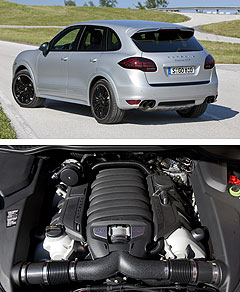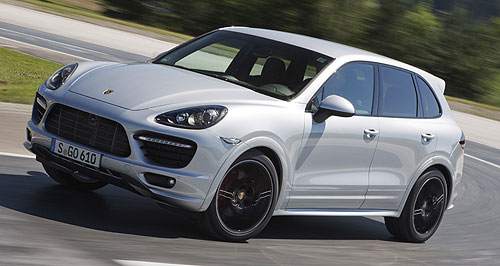Make / Model Search
News - PorscheCloud hangs over ‘atmo’ Porsche V8Non-turbo: The Cayenne GTS has a 4.8-litre naturally aspirated V8. Porsche is yet to decide whether its non-turbo V8 has a future25 Jun 2012 THE Cayenne GTS could be the last Porsche produced with a naturally aspirated V8 engine. A senior Porsche engineer has revealed that the future of the non-turbo V8 engine is anything but certain. Asked whether the naturally aspirated V8 had a future at his company, Porsche engine engineering manager Arno Bogl said: “There is a chance, but it is not decided yet. “Maybe we have the V8 aspirated engine or maybe not it’s not decided.” Mr Bogl was tight-lipped when it came to details, but GoAuto understands the facelifted Panamera will indicate whether Porsche is sticking with the naturally aspirated V8 or switching to a smaller turbocharged unit. The most likely replacement engine for the 4.8-litre V8, which serves in both the Panamera and Cayenne, is a twin-turbocharged 3.0-litre V6 that is currently being readied, according to reports from Europe. This unique Porsche turbo six is expected to be fitted to a range-topping version of the Macan compact SUV, due late next year, and is a contender to replace the non-turbo V8 in the Cayenne and Panamera.  Left: Porsche Cayenne GTS Porsche V8. Left: Porsche Cayenne GTS Porsche V8.The naturally aspirated direct-injection V8 has just been given a mild upgrade with camshaft revisions, in order to produce 309kW and 515Nm for the Cayenne GTS. Even though it is not the most powerful Cayenne – that honour goes to the Cayenne Turbo – Porsche describes the GTS as the most ‘emotional’, emphasising the excitement generated by a non-turbo V8 engine. “The naturally aspirated engine has the fast response this is only (achieved) with naturally aspirated (engines),” said Mr Bogl when asked about the pros and cons of the ‘atmo’ V8. “The disadvantage is the consumption.” Mr Bogl said heading down the popular path of turbocharging had its benefits, including reduced weight. “You can also make the down-size, smaller engines with the same output. The centre of gravity is lower, the consumption is lower.” There is a chance the V8 engine could live on alongside a smaller turbocharged engine, such as the 3.0-litre twin-turbo, playing on the emotion Porsche emphasised when presenting the Cayenne GTS. “Maybe we have both, it could depend on the model,” said Mr Bogl. There is potential for the naturally aspirated V8 engine to be deployed in select markets. Porsche SUV chassis manager Markus Schieritz said: “Maybe there are some markets that are not taking so much care about fuel consumption.” While it may not be as efficient as a smaller boosted engine, Porsche points out that this generation Cayenne GTS uses 23 per cent less fuel than the previous-generation version, although much of the gain came from a lighter body. The new Cayenne GTS weighs 2085kg and records an official fuel consumption figure of 10.7 litres per 100km with the help of idle-stop technology.  Read more |
Click to sharePorsche articlesResearch Porsche Motor industry news |











Facebook Twitter Instagram